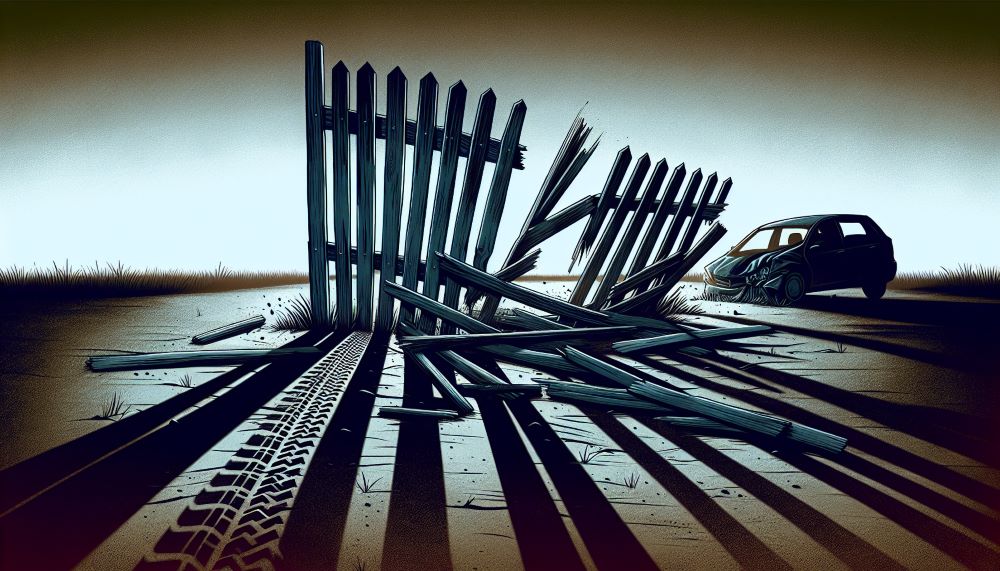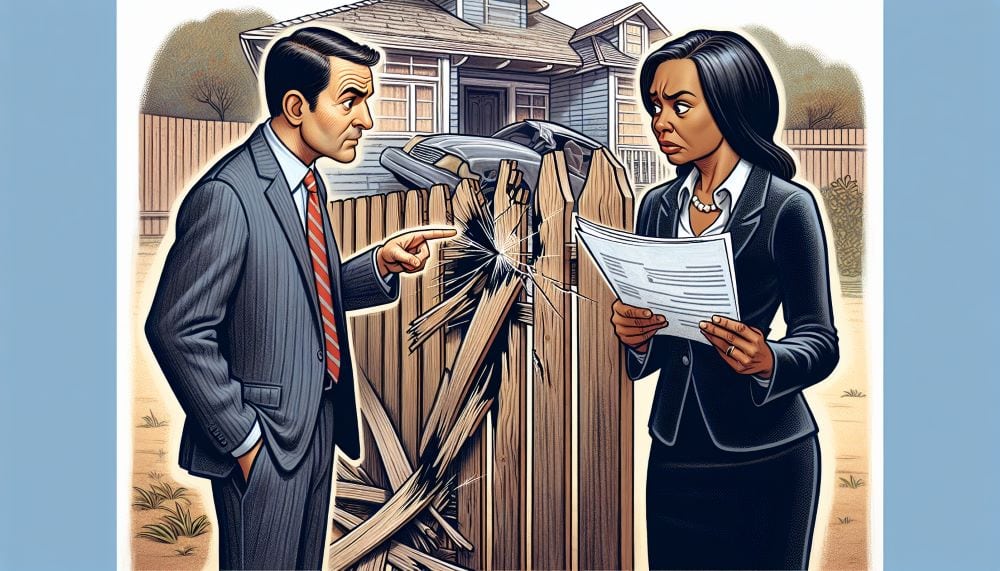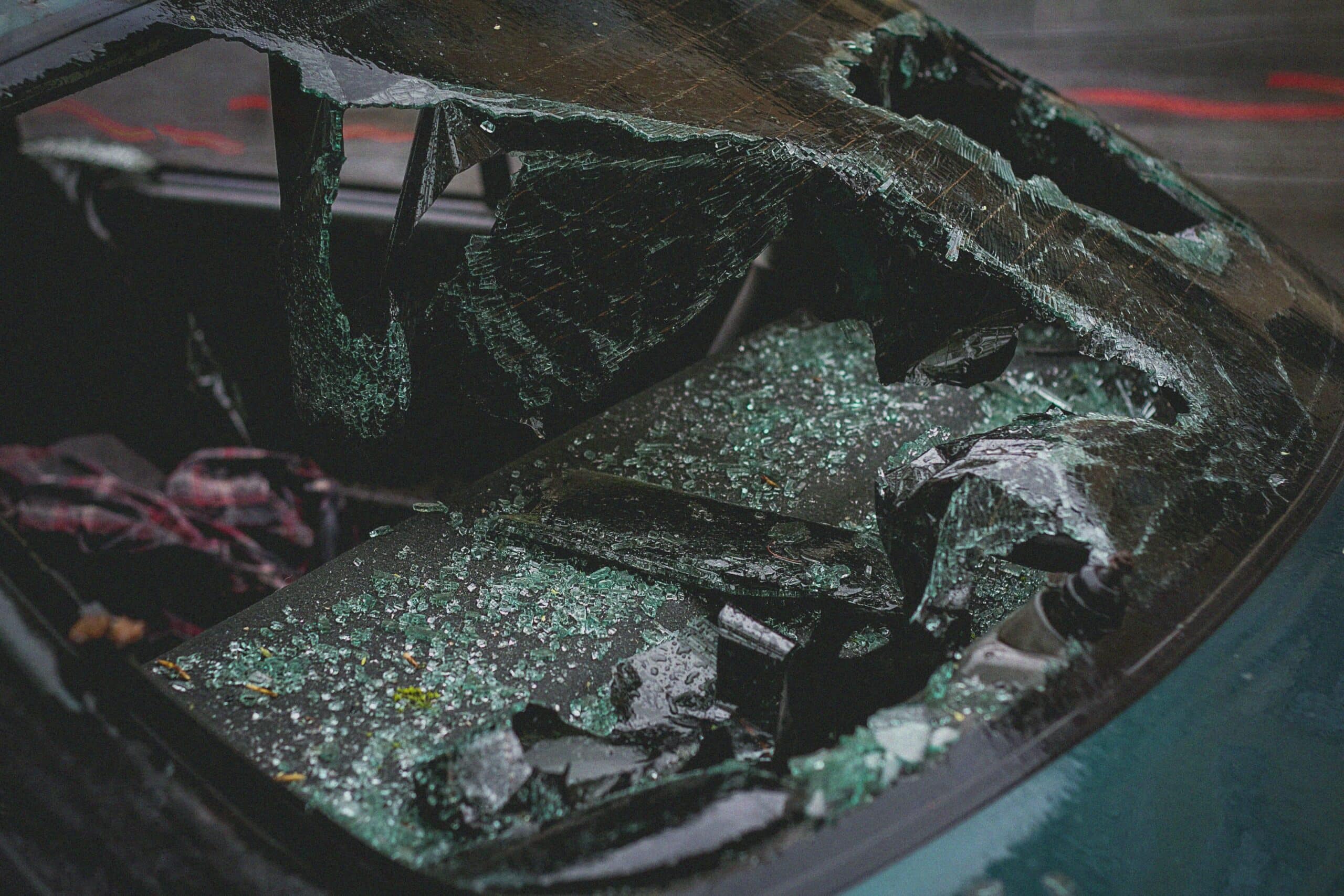When someone hit my fence and drove away, immediate action is crucial for property repair and seeking justice. This article will show you how to gather evidence, report the incident, handle insurance claims, and understand your legal options, ensuring the driver who caused the damage doesn’t go unpunished.
Identifying the Hit-and-Run Incident

Under the law, understanding what a hit-and-run entails is crucial when faced with such an incident. This incident involves a driver causing property damage, such as to a person’s car, and failing to stop and provide personal information. Typically, at the scene of an accident, the involved party must supply their name, address, and vehicle registration number. This requirement is designed to facilitate identifying the individual responsible for the accident.
However, when the perpetrator drives away, the onus of gathering evidence falls on you. Ensuring that the responsible party doesn’t escape justice requires a keen eye and quick action.
Collecting Evidence

The first step in building your case is to document the damage. Photograph the accident scene, including vehicle debris and tire marks that may relate to the hit-and-run. High-resolution cameras or even your smartphone can capture detailed information that could be vital for the investigation.
In addition to photographs, consider acquiring video surveillance footage if available. This might reveal the type of vehicle involved, potentially the driver’s identity, and even capture the license plate. Also, smartphone geotagging can provide verified timestamps and locations for photographic evidence collected at the scene.
Talking to Witnesses
Eyewitnesses can significantly bolster your case. Therefore, it is necessary to collect their contact information as it can aid in identifying the hit-and-run driver. Witnesses offer an impartial perspective and might observe details missed by those involved, including the other driver, both of which are crucial for understanding the sequence of events.
It is important to obtain witness statements promptly while their memory of the event is fresh. Despite potential inaccuracies, witness testimonies corroborate the incident’s accounts and are crucial for law enforcement to gather identifying information about the at-fault driver or their vehicle.
Reporting the Incident to Authorities
Reporting the hit-and-run incident to authorities is the next step once enough evidence has been gathered. This ensures the safety of all parties involved and triggers an immediate investigation, which can increase the chances of apprehending the culprit.
During this phase, it becomes vital to file a police report. It serves as official documentation of the incident and provides important details that may aid in the investigation.
Filing a Police Report
Filing a police report can be done online, by calling the police to the scene, or in person at a local police station. The report should include crucial information such as the date, time, and location of the incident, personal contact information, and a description of the property damage.
Regardless of the presence of injuries, filing a police report is recommended in all hit-and-run incidents as it is an important document for claiming compensation.
Role of Law Enforcement
The role of law enforcement in hit-and-run incidents is pivotal. If officers arrive at the scene promptly or receive tips from witnesses, they may engage in a pursuit to apprehend the hit-and-run driver rapidly. Additionally, police collaborate with other departments or agencies to track down a suspect vehicle that may have traveled beyond their jurisdiction following a hit-and-run.
Dealing with Insurance Companies
Once the incident has been reported to the authorities, the subsequent step involves dealing with insurance companies. It’s important to evaluate your homeowners insurance to understand what damages might be covered. Homeowners insurance policies differ; some may cover the cost of repairing or replacing a fence after a hit-and-run incident.
To file a claim with your insurance company for fence damage, you’ll need to gather all relevant documentation, including photos of the damage, a copy of the police report, and any estimates for repairs. This is where the evidence collected in step one comes into play.
Homeowners Insurance Coverage

Homeowners insurance policies typically cover fences as ‘other structures’, with coverage limits usually up to 10% of the house’s coverage amount. However, it’s important to note that these policies generally do not cover damage to fences resulting from wear and tear or lack of maintenance.
In some cases, your homeowners insurance policy may cover fence damage caused by events like a storm.
Filing an Insurance Claim

Filing an insurance claim is the next step after establishing your coverage. Again, the police report is a critical document for this process. It’s encouraged to file a police report immediately, particularly when the damage could be significant, to avoid complications with insurance claims.
Understanding your homeowner’s insurance policy is significant in the claims process for a hit-and-run incident as it covers damage to fences from specific causes, like vandalism. If responses from the insurance claim process are delayed, you should verify your contact information with the claims department and can seek assistance from the insurance division if delays are unreasonable.
An insurance adjuster will inspect the damage at no cost to you, and you should not feel forced into agreeing on a settlement until satisfied with the compensation offered. Insurance claims may be paid out in stages, starting with an emergency advance, followed by subsequent payments for structural damage.
Even after a claim is settled, you can contact your insurance company to request additional payments for previously unlisted items, provided the total coverage limit has not been reached.
Legal Options and Seeking Compensation
In some cases, you might need to explore legal options to seek compensation for property damage. This process includes:
Filing a legal claim in the appropriate court, which includes the submission of a summons and complaint for compensation.
If the case proceeds to trial, evidence is presented.
A judge or jury makes determinations regarding responsibility and appropriate compensation.
Please note, some jurisdictions have a statute of limitations for property damage claims. For instance, in Nevada, a legal claim must be filed within three years to be considered valid.
Pursuing a Civil Lawsuit
An assessment of whether the case is financially and legally feasible to pursue is important before filing a civil lawsuit for property damage. It’s crucial to consider the defendant’s ability to pay any judgment awarded, as collecting the judgment may require additional legal steps.
In a civil suit for property damage, such as damage to a fence, one must establish the legal elements of negligence which include:
Duty
Breach
Causation
Damages
The initial steps of a lawsuit involve filing and serving the summons and complaint, with the complaint setting forth the facts, the defendant’s liability, and the damages sought.
It’s also important to remember that a lawsuit must be filed in the proper court and geographic location, often in the county where the defendant lives or where the incident occurred. Eyewitness accounts are valuable in identifying the hit-and-run driver and can be crucial when legal teams investigate the claim.
Working with a Lawyer
In property damage cases, working with a lawyer can be highly beneficial. An experienced attorney can assist with:
Quantifying property damage and repair costs
Navigating complex legal proceedings to claim compensation
Understanding how various insurance policies might influence the outcome of a property damage claim
Legal expertise is invaluable in these situations.
A lawyer can provide the following services:
Ensure that legal action for property damage is taken within the statutory deadline, preserving the right to pursue justice against the at-fault party
Represent clients in court
Manage the procedural complexities that many individuals find daunting
Seeking an initial legal consultation helps determine the feasibility and potential timeline of a lawsuit. Attorneys can advise on:
whether a case should be settled out of court
whether a case should proceed to trial
whether a case should be resolved through arbitration or mediation.
Summary
In conclusion, dealing with a hit-and-run incident can be a daunting process. However, with the right steps, evidence, and legal assistance, you can navigate this challenge and secure justice. From identifying the incident, collecting evidence, reporting to authorities, dealing with insurance companies, to exploring legal options and seeking compensation – each step plays a crucial role in the process.
Remember, it’s not just about repairing the damage but also about preventing future instances. Enhancing property security and maintaining open communication with neighbors can go a long way in ensuring a safer environment for everyone.
Frequently Asked Questions
How do I stop feeling guilty about an accident?
It’s important to understand that feeling guilty after an accident is normal. Share your feelings with others and give yourself time to heal. Seek support from trusted individuals and consider seeking professional help if needed.
How do you deal with a car accident that was your fault?
If you’re in a car accident that was your fault, make sure to stop, report the accident to the police, exchange information with the other party, document the scene, and notify your insurance company to start the claim process. It’s important to follow these steps to handle the situation responsibly.
What is the most common type of car accident?
The most common type of car accident is a rear-end collision, where one vehicle strikes the back of another. This type of accident is often wrongly assumed to be the fault of the driver at the back.
How long after a hit and run accident can you be charged?
In Nevada, you can be charged for a hit-and-run accident within three years of the incident.
What is considered a hit-and-run incident?
A hit-and-run incident occurs when a driver causes property damage and fails to stop and provide personal information.





